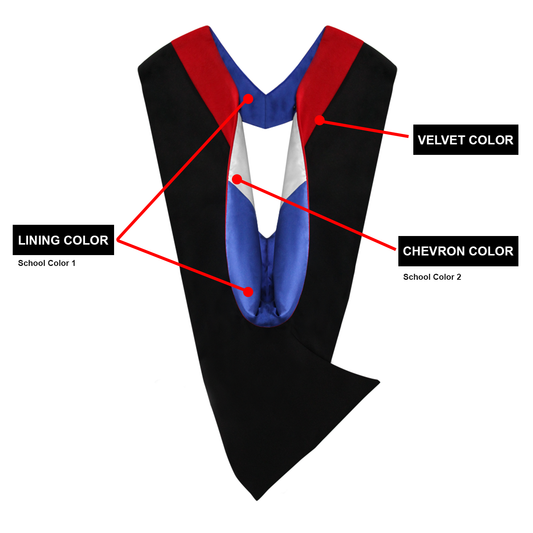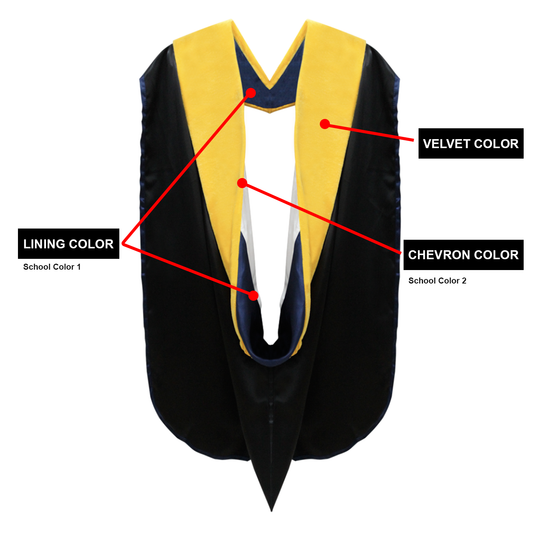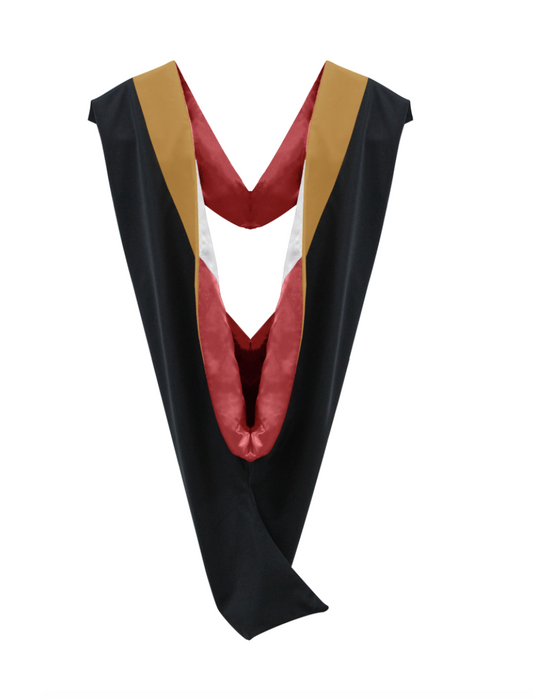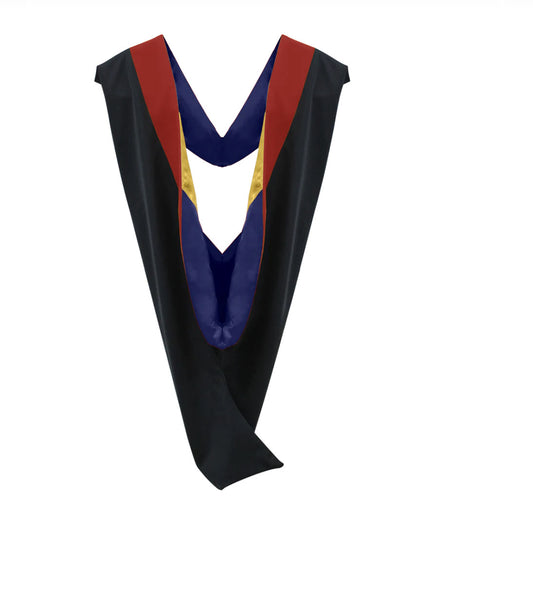Academic Regalia Hoods Color List
Your Hood Colors are a significant piece of your arrangement of Academic Regalia for graduations incorporates a hood, hat, and outfit. The hood, through the scholastic formal attire hues, more than some other thing speaks to your degree or control, alongside the school you joined in. The velvet edge speaks to your college or school discipline, the glossy silk hues your school and the general size and shape speak to the accomplishment of your degree.
The following is a graduation hood color list. Your scholarly hood hues are eventually the choice of your degree-conceding foundation and you. Nonetheless, these are the official scholastic graduation attire hues.
Academic Hood Colors
| Drab |
Maize |
Purple |
White |
Light Blue |
| Accounting |
Agriculture |
Architecture |
Arts |
Arts in Education |
| |
|
|
|
|
| Drab |
Drab |
Scarlet |
Nile Green |
Silver |
| Business Administration |
Business Education |
Canon Law |
Chiropody |
Chiropractic |
| |
|
|
|
|
| Purple |
Orange |
Drab |
Drab |
Crimson |
| City Planning |
Civil Engineering |
Commerce |
Commercial Science |
Communication |
| |
|
|
|
|
| Russet |
Light Blue |
Science Gold |
Midnight Blue |
Lilac |
| Conservation |
Counseling and Guidance |
Criminology |
Criminal Justice |
Dental Surgery |
| |
|
|
|
|
| Lilac |
Scarlet |
Brown |
Copper |
Light Blue |
| Dentistry |
Divinity |
Dramatic Arts |
Economics |
Education |
| |
|
|
|
|
| Orange |
White |
Science Gold |
Brown |
Aquamarine |
| Engineering |
English |
Environmental Science |
Fine Arts |
Foreign Affairs |
| |
|
|
|
|
| Peacock Blue |
Russet |
Peacock Blue |
Sage Green |
White |
| Foreign Service |
Forestry |
Government |
Health and Rehabilitation |
History |
| |
|
|
|
|
| Sage Green |
Science Gold |
Drab |
Bilberry |
Crimson |
| Hygiene |
Industrial Arts |
Industrial and Labor Relations |
Interior Design |
Journalism |
| |
|
|
|
|
| Purple |
Purple |
White |
White |
Lemon |
| Jurisprudence |
Law |
Letters |
Literature |
Library Science |
| |
|
|
|
|
| Science Gold |
Kelly Green |
Science Gold |
Pink |
Silver |
| Mathematics |
Medicine |
Military Science |
Music |
Nephropathy |
| |
|
|
|
|
| Apricot |
Teal |
Silver |
Kelly Green |
Light Blue |
| Nursing |
Optometry |
Oratory |
Osteopathy |
Pedagogy |
| |
|
|
|
|
| Peacock Blue |
Olive |
Science Gold |
Dark Blue |
Sage Green |
| Personnel Services |
Pharmacy |
Philanthropy |
Philosophy* |
Physical Science |
| |
|
|
|
|
| Science Gold |
Nile Green |
Science Gold |
Dark Blue |
Gold |
| Physics |
Podiatry |
Police Science |
Political Science |
Psychology |
| |
|
|
|
|
| Peacock Blue |
Salmon Pink |
Peacock Blue |
Purple |
Light Blue |
| Public Administration |
Public Health |
Public Service |
Regional Planning |
Religious Education |
| |
|
|
|
|
| Scarlet |
Citron |
Science Gold |
Dark Blue |
Citron |
| Sacred Theology |
Sanitary Science |
Science |
Social Ethics |
Social Science |
| |
|
|
|
|
| Citron |
Citron |
White |
Silver |
Green |
| Social Service |
Social Work |
Sociology |
Speech |
Surgical Chiropody |
| |
|
|
|
|
| Scarlet |
Citron |
Blue-Violet |
Gray |
Dark Blue |
| Theology |
Urban Life |
Urban Planning |
Veterinary Science |
PhD Blue
|
Additional Hood Specifications
Hoods must be equipped with a lining that features the official colors of the institution conferring the degree; if more than one color is shown in the field, it will be divided with one or more chevrons. The pattern used on the hoods must be approved by the American Council on Education.
Souvenir quality hoods are intended to be kept by students following the graduation ceremony; for the sake of economy, the lining of these hoods is generally the same fabric as the shell. Likewise, velvet is swapped out for velveteen colored trim in these instances.
As outlined in the chart below, the trim color should indicate which degree subject a student is receiving. To be clear, a student receiving a Master of Science in Education should wear a hood trimmed with light blue as this color represents education, not yellow (which represents science).
No hood should feature a divided trim in an effort to represent multiple degrees or subjects. Instead, many institutions have simplified the process by not recognizing certain disciplines with a specific hood color, and rather categorizing them based on larger disciplines. For example, journalism graduates might wear white trim when graduating with their Bachelor of Arts in Journalism (since white represents arts and letters) as opposed to the specific trim color of crimson for journalism.
Understanding The Academic Hood
The color-coded system of hoods is critical to academic regalia as it identifies the degree and institution of the wearer. Oddly enough, graduation hoods are also the most misunderstood and improperly worn piece of graduate paraphernalia.
The Early History Of Academic Hoods
Academic hoods trace their history back to the medieval time period. There were colorful silk hoods and fur-lined hoods that were worn by academics in the 16th century. They became associated with learned people since hoods had mostly fallen out of fashion after window glazing became common among laymen in the 15th century.
The length and shape of the hood itself are designed to show the level of education the wearer has received. For example, a bachelor’s hood has a “simple” design, meaning it only has a cow and lira pipe (tail,) and was only three feet in length. The master’s hood, was similar, but had a lirapipe of four feet in length. Due to its high cost and low prestige, it was often omitted from academic dress – a tradition that continues today.
Standardizing The Hood With The 1895 Intercollegiate Code
The 1895 Intercollegiate Code was one of the first documents used to standardize academic hoods. It initially stated that the hood should be edged with either stain, silk or velvet – in a special color that would show the degree title of the wearer, as it appears on their diploma.
This lining was originally intended to be no wider than six inches. However, some major universities like Yale and University of Pennsylvania stipulated a width of no more than four inches. Even more specifically, Princeton’s regulation required the hood to have:
These standards were quickly adopted by other manufacturers. Velvet was the most often-used material, as it provided a good contrast to the softer, silken material and complemented other design aspects of the doctoral gown.
However, as there were hundreds of different educational institutions in the US, it became difficult to assign a unique lining pattern for the hood. By the early 1930s, the Bureau only offered unique hood linings to schools that offered doctoral programs.
Understanding The Roots Of Modern Academic Hoods
Though the 1895 Intercollegiate Code was the first major document to standardize modern academic hoods, today’s hoods have other influences, too. Harvard University is one of these.
In 1902, Harvard specified that all master’s hoods worn at the school would be 3.5 feet in length. Within just a few years, a length of 3.5 feet became standard at almost every school in the United States.
In addition, Harvard required the doctor’s hood to have a “full” rather than “simple” shape. This means that it has multiple “panels” (also known as a “cape”) on either side of the hood. It was required to be 4 feet in length.
The shape of the hood has also changed over time. It began with a fully-rounded bottom. However, by 1902, most manufacturers had flattened this curvature – likely to help cut production costs and expenses.
All hoods created in America are based on the same template – the Oxford University Bachelor of Arts hood from the 1890s. This used a unique “split salmon” design that allowed the wearer to fold the cowl back and show off more of the interior lining, compared to other standard hoods used in Britain.
Another common feature of modern bachelor’s and master’s hoods is a liripipe (trail) with crescent-shaped cutouts that match those of the bottom of the sleeves of a master’s gown. In contrast, a doctoral hood has a rectangular liripipe and lacks these cutouts. It also has a rounded cape that helps complement the bell-shaped, rounded sleeves of the doctoral gown.
For most bachelor’s hoods, the exterior is created from worsted wool, which is also used for traditional bachelor's gowns. Silk is used to match the smoother material of the master’s and doctor’s gowns. Regardless of the outside material, though, today’s hoods typically use a silk lining in the colors of the college that conferred the wearer with their degree.
Academic Hoods Have A Long History!
Though modern standards for bachelor’s, master’s, and doctor’s hoods have changed and today’s hoods are thoroughly modern, they still have a long history that traces back more than 500 years – and it’s interesting to understand how and why traditions like these hoods, which are often taken for granted, have come to be!





















